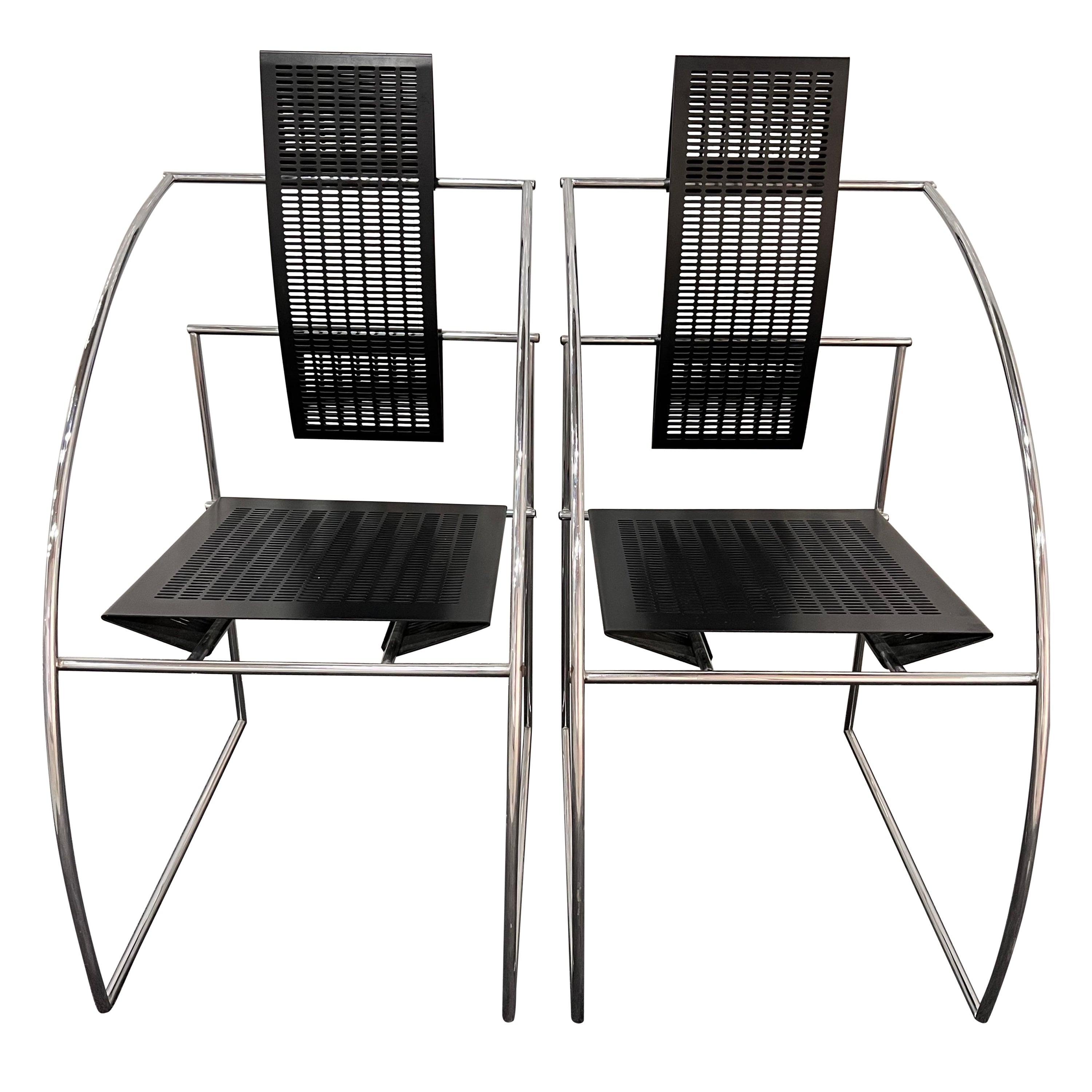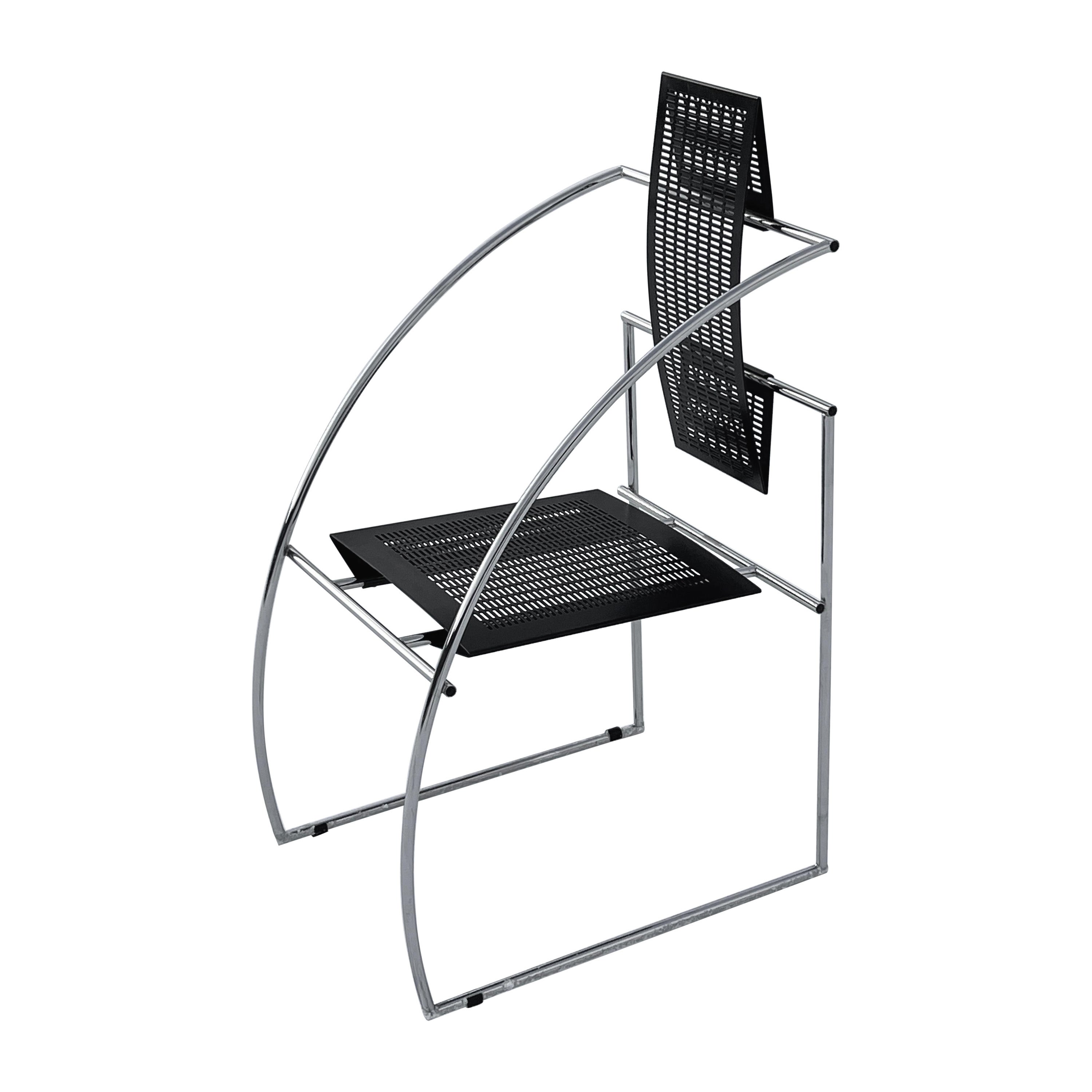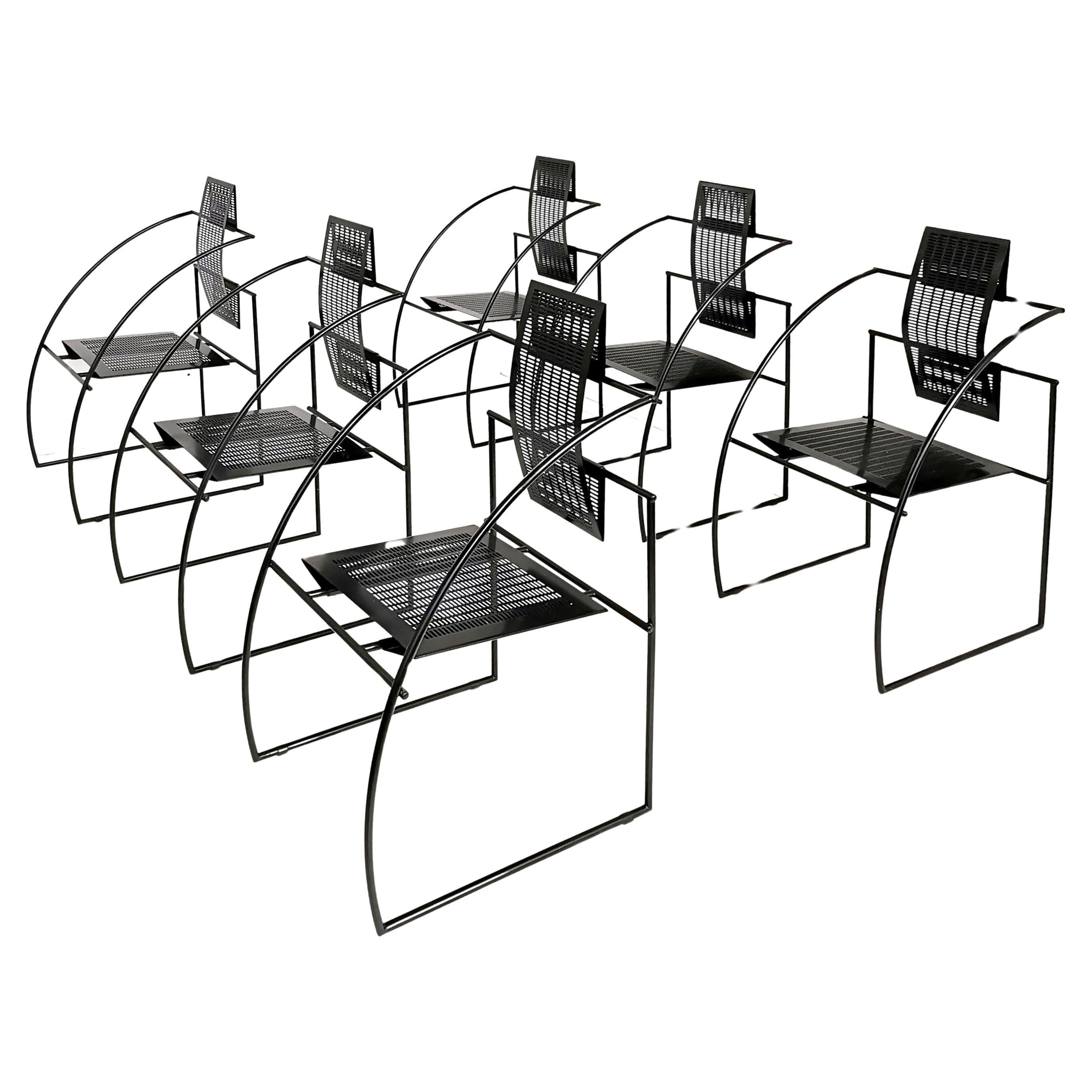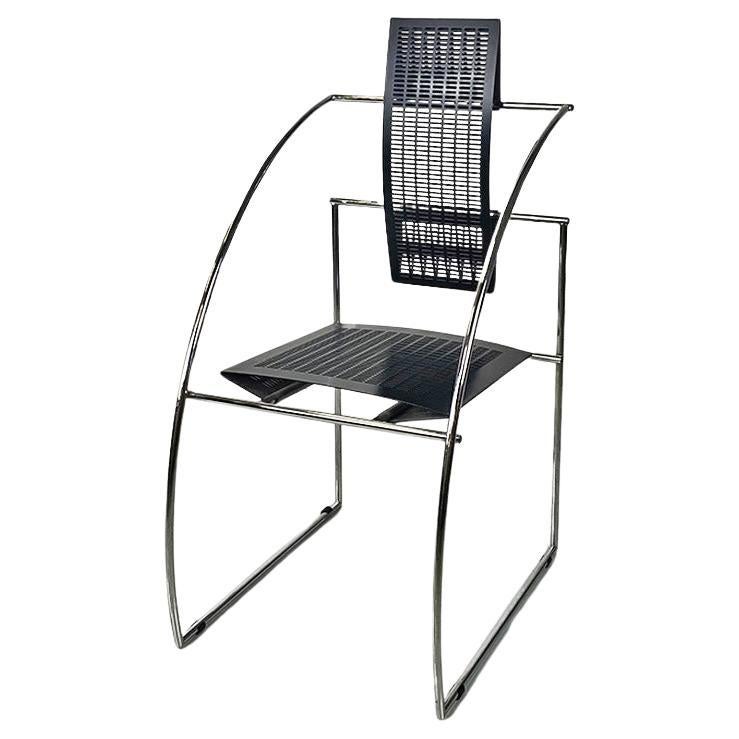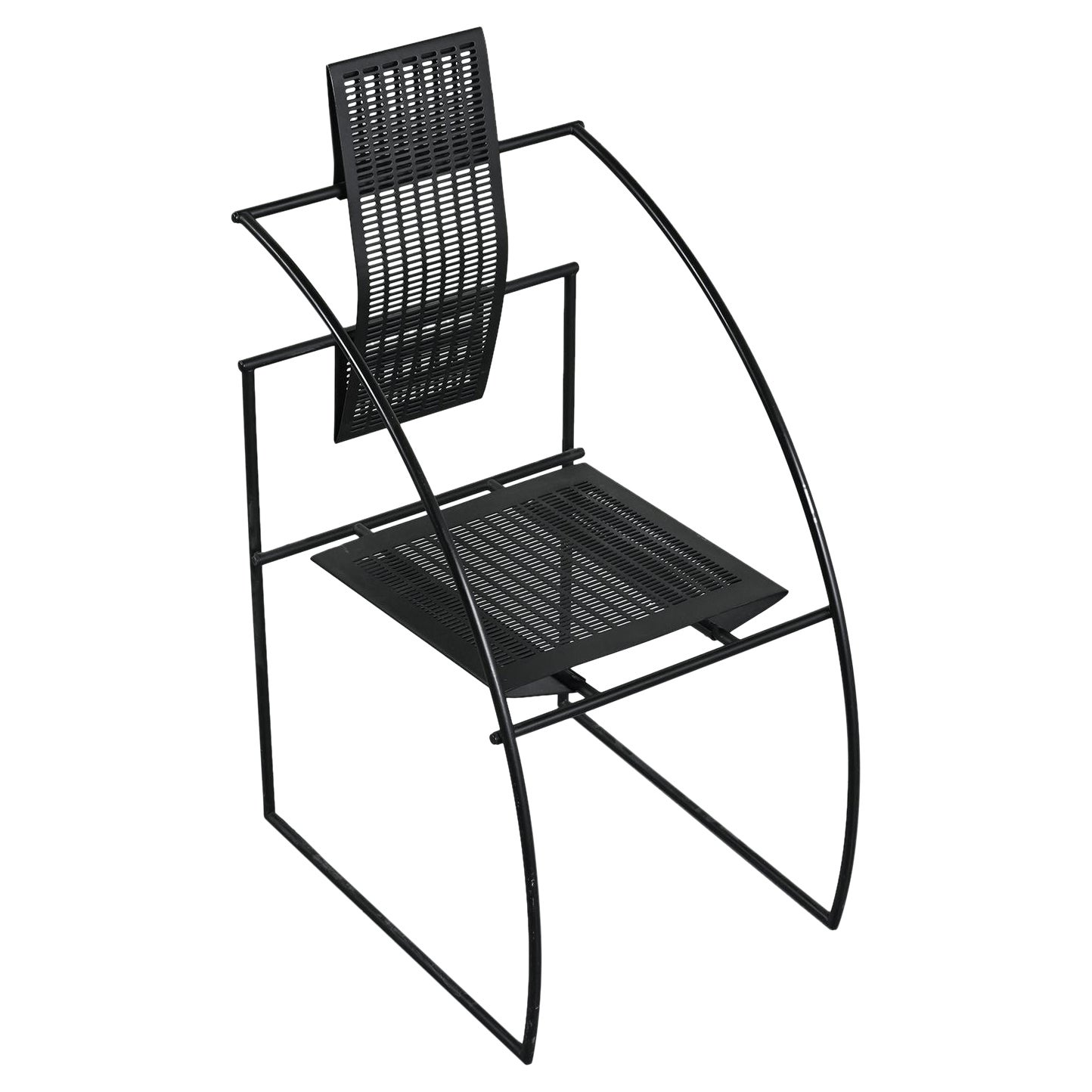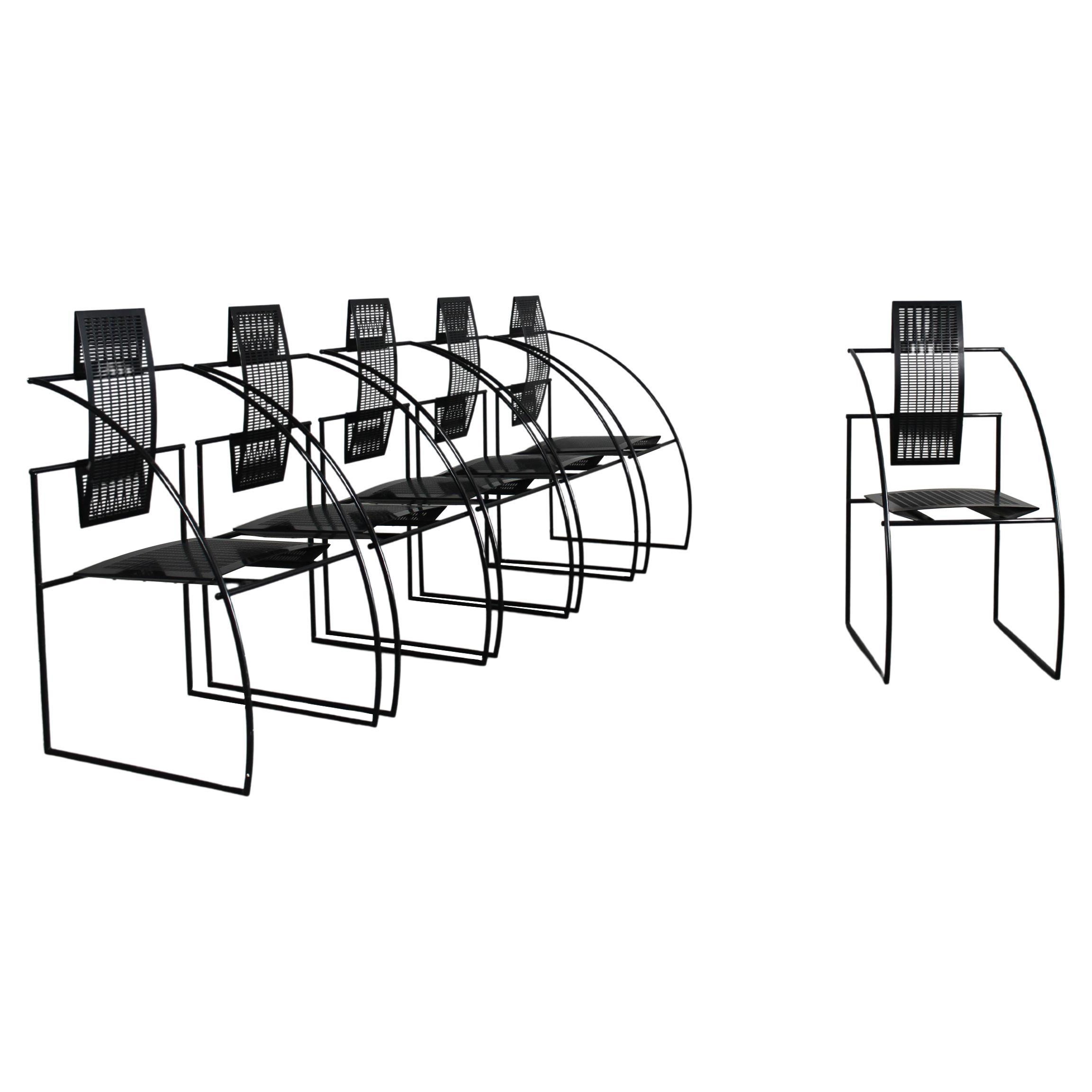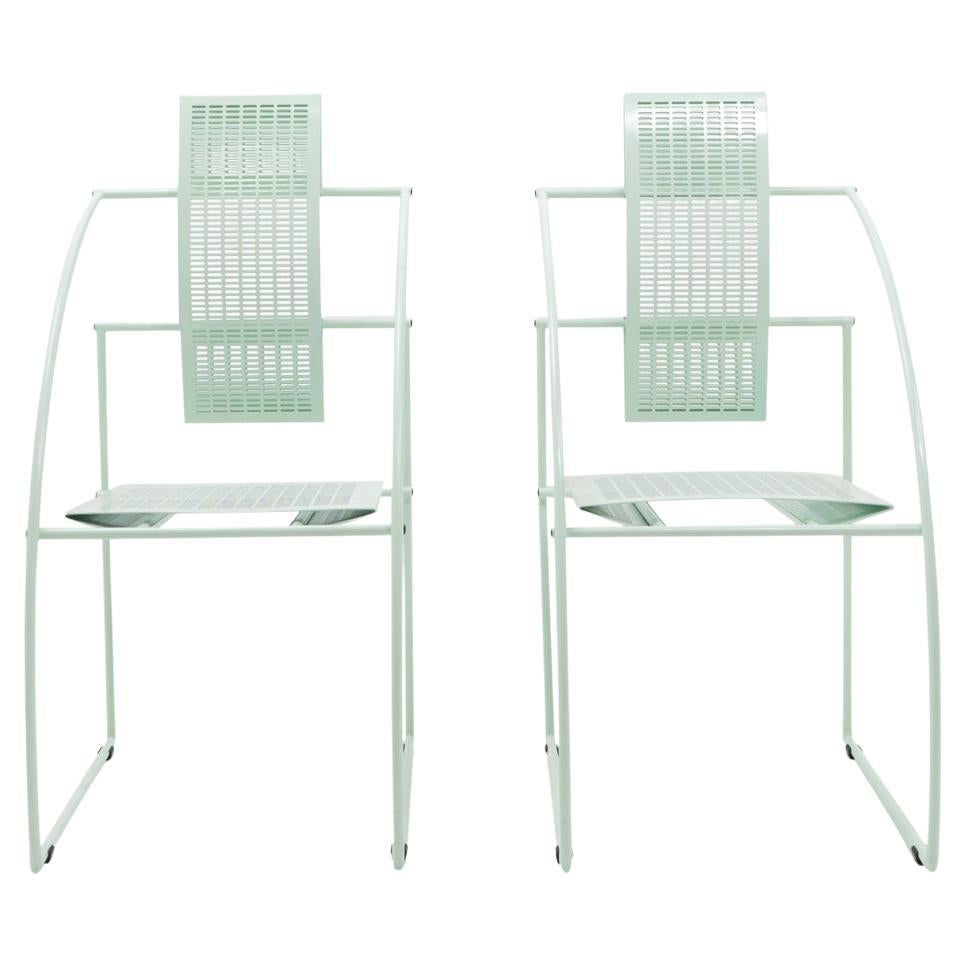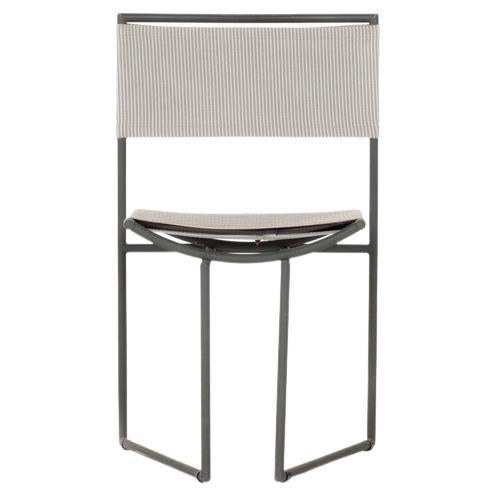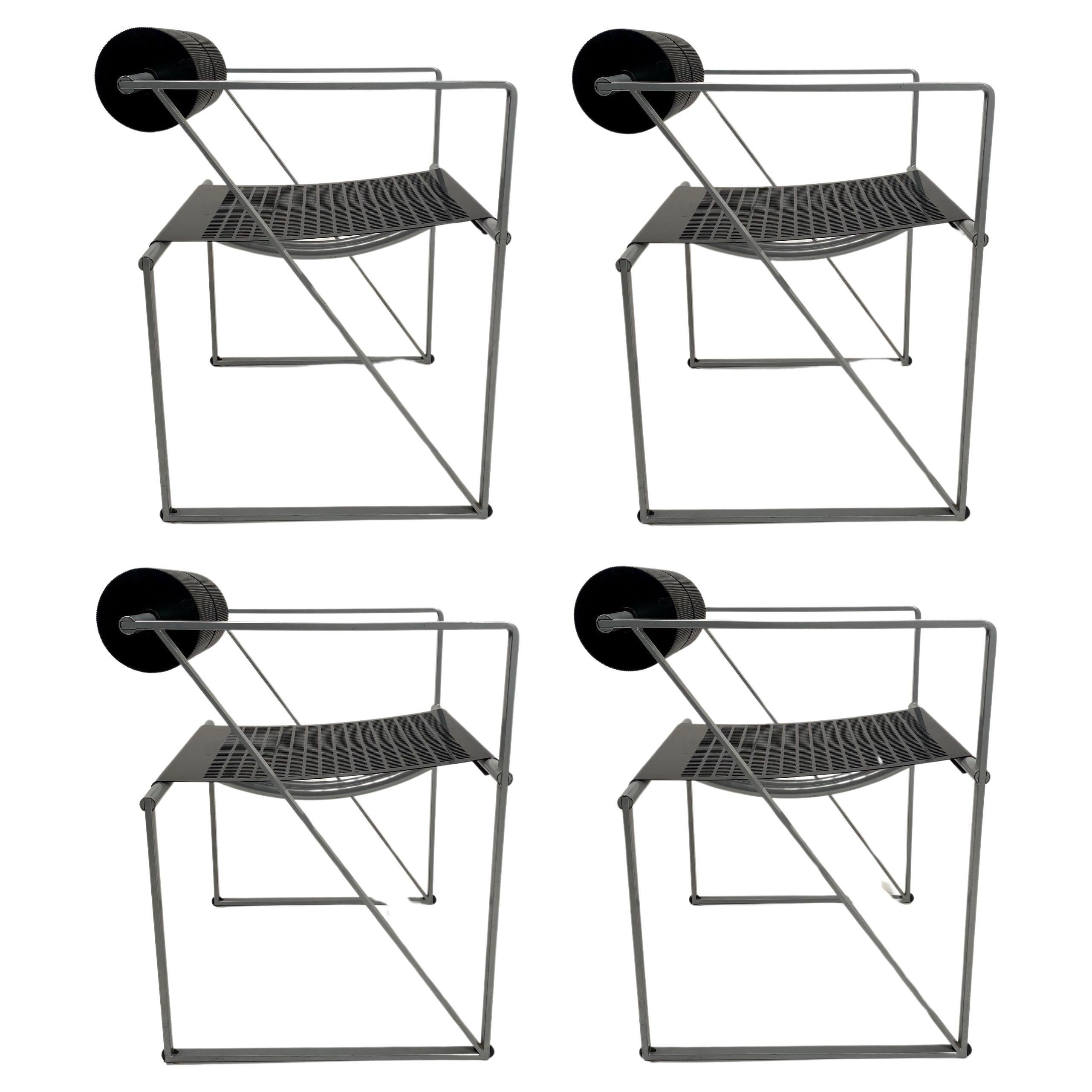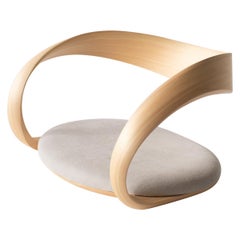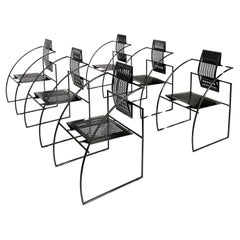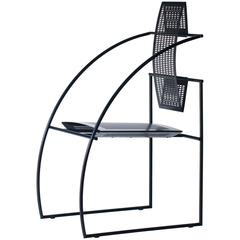
Mario Botta Quinta Chair Alias Post Modern design
View Similar Items
Mario Botta Quinta Chair Alias Post Modern design
About the Item
- Creator:Mario Botta (Designer),Alias (Manufacturer)
- Dimensions:Height: 37.01 in (94 cm)Width: 18.12 in (46 cm)Depth: 21.66 in (55 cm)Seat Height: 16.93 in (43 cm)
- Style:Post-Modern (In the Style Of)
- Materials and Techniques:
- Place of Origin:
- Period:1980-1989
- Date of Manufacture:circa 1990
- Condition:Wear consistent with age and use.
- Seller Location:Shibuya-ku, JP
- Reference Number:1stDibs: LU216337939083
Mario Botta
Swiss architect Mario Botta may be renowned for his impressive postmodern architecture projects such as the San Francisco Museum of Modern Art, but the chairs, lighting and other furniture he created reflect a mastery of geometrically rich forms and an elegant application of simple symmetry.
Born in Mendrisio, Switzerland, in 1943, Botta gained an interest in architecture at an early age. He apprenticed at the architectural firm Carloni and Camenisch and designed his first building — a two-family house at Morbis Superiore in Ticino — at age 16. During the early 1960s, Botta attended the Liceo Artistico in Milan and then studied at the University Institute of Architecture in Venice under art historian Giuseppe Mazzariol and influential Italian architect Carlo Scarpa.
While studying in Venice, Botta worked for Swiss-born French architect Le Corbusier — whose career spanned hundreds of architecture projects — and gained inspiration from Estonian-American architect Louis Kahn, who was known for his modern and brutalist architectural style. In 1969, Botta completed his studies and established his practice in Lugano, designing and building single-family homes.
Throughout the 1970s, Botta gained fame for his innovative, geometrical designs and deceptively simple forms, such as his first large-scale building project in 1977 — the Middle School in Morbio Inferiore, Switzerland. Botta later established himself as one of the masters of 1980s postmodern design in his architecture and his furniture. His postmodern ideas characterize the dining room tables and seating he designed for companies such as Alias, as well as his table lamps and floor lamps for Artemide.
Botta’s noteworthy architectural projects designed during the 1990s and 2000s include the Cymbalista Synagogue and Jewish Heritage Center in Tel Aviv, Israel; the Monastery of the Holy Apostles Saint Peter and Andrew in Lviv, Ukraine; and the Theater of Architecture in Mendrisio, in 2018.
On 1stDibs, discover a range of vintage Mario Botta lighting fixtures, seating, tables and decorative objects.
- Alien Chair Carlo Forcolini 1980s DesignBy Carlo Forcolini, AliasLocated in Shibuya-ku, TokyoAlien chair design by Carlo Forcolini in the 1980s. Yellow wood seat and back. Frame is painted steel. Manufactured by Alias Italy.Category
Vintage 1980s Italian Post-Modern Chairs
MaterialsSteel
- Legless Floor Chair Japanese Modern Style Bentwood ChairBy Studio JigLocated in Shibuya-ku, TokyoLegless floor chair in the Japanese modern style. In tradition Japanese style, floor chair is set on traditional Tatami Igusa floor along with tabl...Category
2010s Japanese Modern Chairs
MaterialsWood
- HAL2 Chair Shiro KuramataBy Shiro KuramataLocated in Shibuya-ku, TokyoHAL2 chair designed by Shiro Kuramata for Cassina Inderdecor in 1987. Vinyl seat and expand metal back.Category
Vintage 1980s Japanese Post-Modern Chairs
MaterialsMetal, Steel
$16,000 - Kitchen chair Tom Dixon 80s early work creative salvageBy Tom DixonLocated in Shibuya-ku, TokyoKitchen chair designed by Tom Dixon. This chair was made of flying pan and Chinese ladle. So named Kitchen chair. One of representing chair of designers early works. Also one of hist...Category
Vintage 1980s British Post-Modern Chairs
MaterialsSteel
- Kim Steel and Plywood Chair Michele De Lucchi for Memphis Original 1980sBy Memphis Group, Michele de LucchiLocated in Shibuya-ku, TokyoKim chair designed by Michele De Lucchi in 1987. Made of unique shaped black steel frame and bent plywood for back and seat. Memphis logo mark is on the back of the seat. This logo i...Category
Vintage 1980s Italian Post-Modern Chairs
MaterialsSteel
- Muji 2 Seater Chair Japanese Contemporary Style Bentwood ChairBy Studio JigLocated in Shibuya-ku, TokyoMuji 2 seater chair. Kenta Hirai created it with the technique "Free form lamination." It has characteristic streamlined combined back and seat. Made of ...Category
2010s Japanese Modern Chairs
MaterialsWood
- Mario Botta Quinta Chairs for Alias, a PairBy Mario Botta, AliasLocated in Miami, FLPair of Quinta chairs with chrome frame and black steel seat and back by Mario Botta for Alias, 1980s.Category
Late 20th Century Italian Post-Modern Dining Room Chairs
MaterialsSteel, Chrome
$2,400 Sale Price / set20% Off - Mario Botta "Quinta" Chair for Alias 1980sBy Mario Botta, AliasLocated in Wien, WienQuinta, a chair with a legacy dating back to its creation in 1985, is not your ordinary seat; it embodies a fusion of comfort and architectural sophistication. Designed under the inf...Category
Mid-20th Century Italian Mid-Century Modern Chairs
MaterialsMetal, Stainless Steel
- SET DI 6 sedie "Quinta" di Mario Botta per AliasBy Mario Botta, AliasLocated in Milano, MISedia Quinta 605, italiana postmoderna, in metallo di Mario Botta per Alias 1980 Poltrona Quinta 605 con seduta e schienale composti da due lastre di metallo microforato e piegato, l...Category
Late 20th Century Chairs
MaterialsIron
- Quinta 605 chair, Italian postmodern, in metal by Mario Botta for Alias 1980By Mario Botta, AliasLocated in MIlano, ITQuinta 605 chair, Italian postmodern, in metal by Mario Botta for Alias 1980 Quinta 605 armchair with seat and back composed of two sheets of microperforated, bent metal, black lacqu...Category
Vintage 1980s Italian Post-Modern Chairs
MaterialsMetal
- Quinta Chairs by Mario Botta, Alias Italy ca. 1985By Mario BottaLocated in VILLEURBANNE, FRPrice per SKU Chair model 605 also known as Quinta by the Italian designer Mario Botta, Black lacquered steel structure, seat and back in black perforated sheet steel. We have n...Category
Late 20th Century Italian Chairs
MaterialsSteel
- Mario Botta Set of Six 605 Quinta Chairs in Black Lacquered Steel by Alias 1980By Mario Botta, AliasLocated in Montecatini Terme, ITSet of six 605 Quinta chairs with a black steel rod frame seat and back in bent perforated sheet metal. Designed by Mario Botta for Alias in 1985 (This chair is no longer in production). The Quinta chair it's an architecture you can sit on, this design clearly shows the inspiration of iconic designer as Le Corbusier, Louis Kahn, and Carlo Scarpa, an exemplary of this iconic chair is also exhibited at the Museum of Modern Art. Mario Botta was born in 1943 in Mendrisio. After working as an apprentice draughtsman for the Lugano-based architect Tita Carloni, he moved first to Milan and then to Venice, where he enrolled at the department of Architecture at the IUAV. He completed his degree in 1969 with a thesis tutored by Carlo Scarpa – after having met Le Corbusier and Louis Kahn, who were later to be sources of inspiration – and returned to Switzerland to open his own professional firm, which at the time dealt mainly with detached family private homes. These included the villas in Riva San Vitale (1971-1973), Ligornetto (1975-1976) and Morbio Superiore (1982-1983), in which Botta treated the theme of the home as a refuge, which protects and reassures its inhabitants. These were buildings with a character that was ironic and, in a certain sense, monumental, obtained for example (in the case of Morbio) through rigorous symmetrical compositions and a particular use of raw concrete blocks set in a linear pattern and alternated with strips of silvered brick which, on the contrary, were set at 45 degrees. Partially dug into the hillside, the villa was also characterised by a theme which was particularly dear to Botta and which had already been explored in Riva San Vitale; the net distinction between solids and voids, the latter appearing to have been dug out of the building. Between 1980 and 1990, Botta associated with artists and intellectuals from all walks of life and took numerous long trips abroad. Together with Gabriele Basilico and Edoardo Sanguinetti, he published “La Casa Rotonda”, and he became friends with Max Huber, Nicki de Saint Phalle, Dante Isella, Harld Szeemann, Robert Frank and Alberto Flammer. In 1986, the MoMA in New York dedicated a solo exhibition to his work, and the Swiss architect received his first contracts for public buildings and from abroad, debuting with the Cultural Centre in Chambéry (1984-1987). In Japan, on a challenging triangular lot of only one hundred and sixty square metres, a space which remained from the opening of a new highway, Botta built a small building which, with its clarity and strength of image, attempted to stand out in the midst of the chaos that surrounded it, thanks to a thick masonry curtain raised on the main façade, in which slabs of grey marble are crossed with horizontal fissures which erode the angles and cancel the perception of the number of floors which make up the museum. The church of Mongo, on the other hand, was the first step in a long series of places of worship, including designs for the churches of Pordenone (1987-1992) and Sartiana (1987-1995), for the cathedral of Evry (1988-1995), for the basilica of Santa Maria degli Angeli on Mont Tamaro (1990-1996, for the Giovanni XXII church in Seriate (1994-2000) and for the Cymbalista synagogue in Tel Aviv (1996-1998). In each of these, light plays a predominant role as a prime generator of space and a measure for the definition of time that passes with the various phases of the day, the months and the seasons. Light is, however, the main symbolic element, representing through its variations the uneasiness of humankind in the face of divine perfection. In this same period, the scheduling for the construction of a new School of Architecture, the Mendrisio Academy, took place. Inaugurated in 1996, it offered an alternative approach to teaching in contrast to the Swiss University system, in which an important role is played by humanistic subjects and by a copious group of well-known international professors: from Rykwert to Benevolo, Burkhart, Campos Baeza, Dal Co, Frampton, Mendes da Rocha...Category
Vintage 1980s Italian Post-Modern Chairs
MaterialsSteel, Sheet Metal
